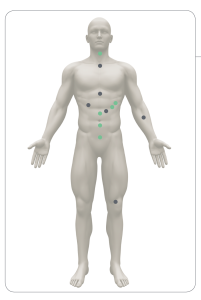SCIENCE
The Basics: What is the Endocannabinoid System?
Search for the ECS online and you’re instantly blinded by graphics and definitions only a scientist could understand. So, we asked our go-to scientist Dr Richard Cunningham to break it all down.
First of all, what is a cannabinoid?
A cannabinoid is a class of chemical compounds that bind to the cannabinoid receptors found within the human body. They are all hydrophobic/lipid soluble molecules. This means they don’t mix well with water.
A receptor is a protein molecule that receives chemical messages from outside of a cell and there are two main cannabinoid receptors found within the body. These are CB1 and CB2.
CB1 receptors are found mainly in the central nervous system and also in organs like the liver, lungs and kidneys, while CB2 receptors are more associated with tissues of the immune system.


When a cannabinoid binds to a cannabinoid receptor, it acts as an agonist, which means it activates the receptor to produce a biological tissue response. Whereas cannabinoid antagonists block a cannabinoid receptor from being activated by an endocannabinoid.
Naturally occurring cannabinoids within the body are known as endocannabinoids, from plants phytocannabinoids such as that from the cannabis plant, and lastly synthetic cannabinoids which are manufactured artificially.
The grouping of the cannabinoid receptors, receptor proteins and endocannabinoids make up what is called the endocannabinoid system (ECS).
The ECS is involved in the regulation of a large range of physiological functions in the body including mood, memory, fertility, pain-sensation and appetite.
As such administration of phytocannabinoids and synthetic cannabinoids which are not naturally found in the body can influence physiological functions mentioned earlier, such as mood, pain-sensation and appetite. And this happens through interactions with the cannabinoid receptors of the body.
Different cannabinoids will have different physiological responses through how and which receptors they bind to, such as the appetite stimulating effect of THC, and the pain-relieving effects of CBD.


 About the author:
About the author:






